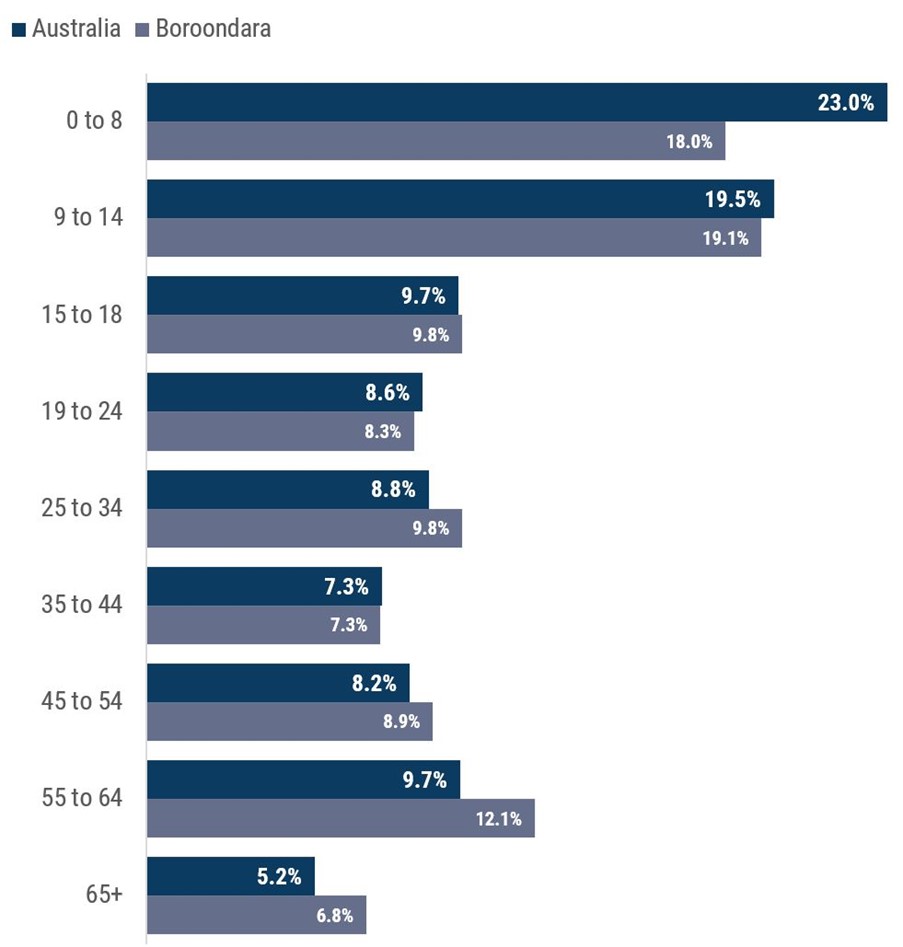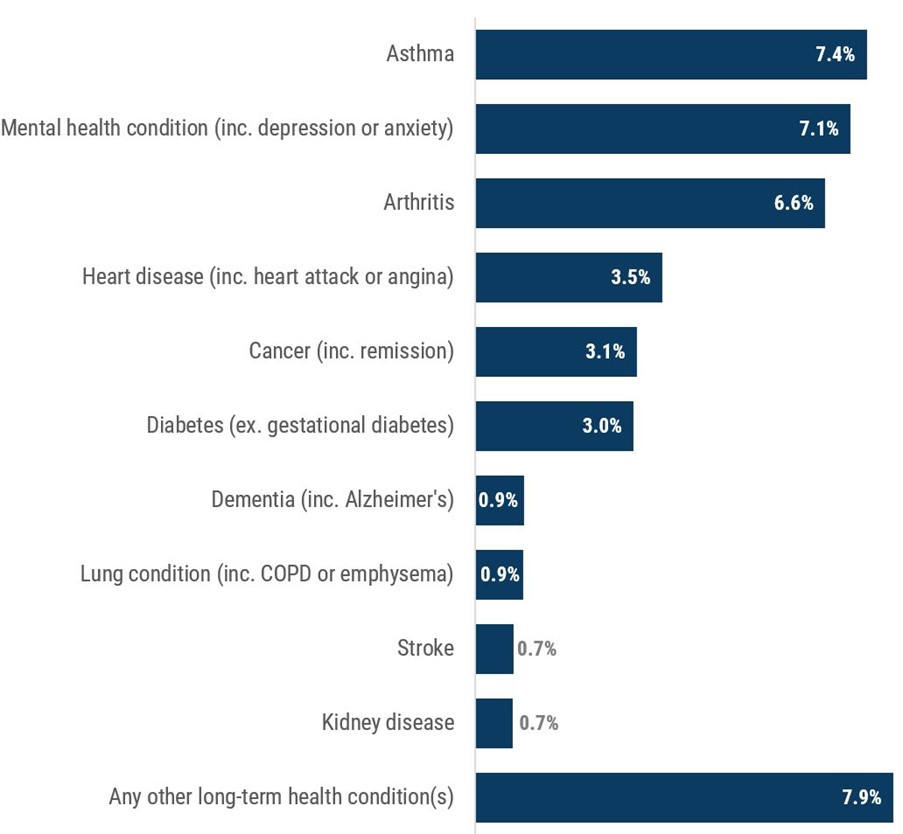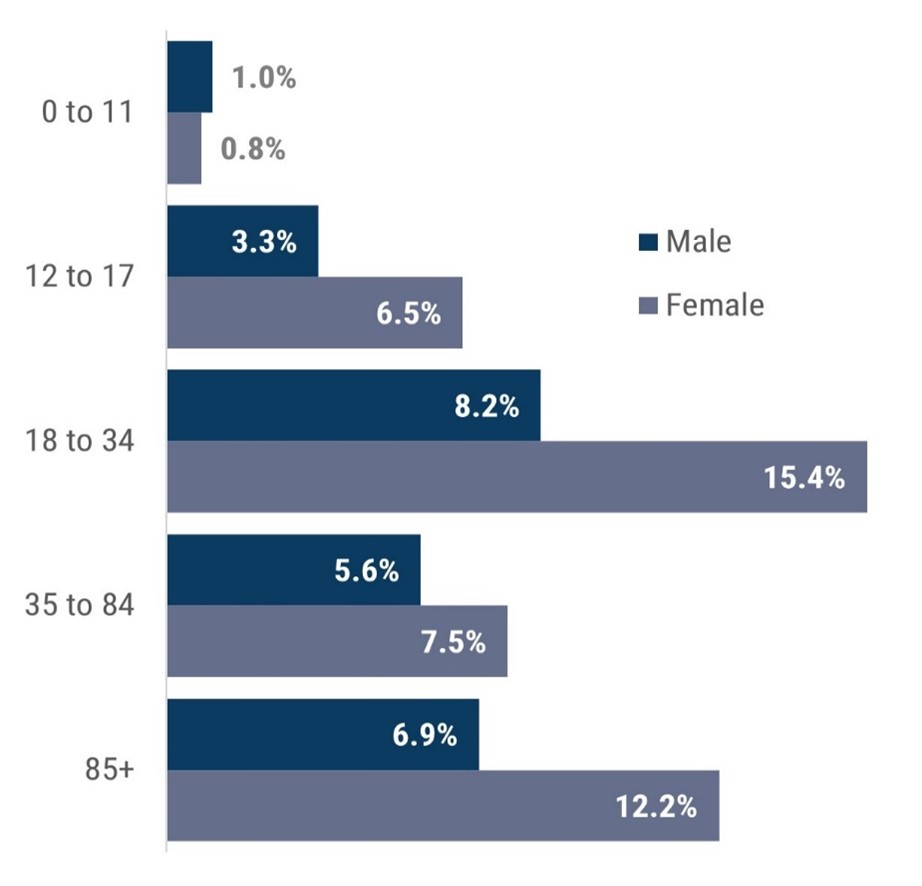People with disability often experience poorer health outcomes compared to those without disabilities. This includes higher rates of chronic conditions, psychological distress, and lower self-reported health status. Research highlights the ongoing impact of ableism (discrimination in favour of able-bodied people) and exclusion.
In Australia, 21.4% of the population live with disability according to the ABS. Research shows that adults with disability are more likely to experience high or very high levels of psychological distress than adults without disability (Australian Institute of Health and Welfare 2024). This disparity is due at least in part to a range of systemic barriers including limited access to services, unmet healthcare needs, inaccessible information, ineffective communication, and discriminatory attitudes (Australian Bureau of Statistics 2022).
- 14.5% of adult Boroondara residents say their participation in daily activities is difficult or restricted due to a health condition or impairment
- 4.5% of Boroondara residents (7,516 people) sometimes need help due to a health condition, disability or old age, lower than Greater Melbourne’s rate of 5.5%
- 7,516 needed help in their day-to-day lives due to disability in 2021, up from 6,406 in 2016. An upward trend is likely to continue as the population ages.
Source: Victorian Population Health Survey 2023 and 2016 and 2021 Census.
Demographic characteristics of people with disability in Boroondara
- More females have disability than males, possibly partly due to conditions like osteoporosis, but also because they outnumber males in older age groups where disability is more common.
- 19.9% of Boroondara residents with disability (1,492 people) live alone in a private dwelling.
- 23.2% of residents with disability (1,741 people) live in a non-private dwelling, mainly accommodation for older adults.
Source: 2021 Census.
National Disability Insurance Scheme (NDIS) participants in Boroondara
At December 2024, Boroondara had 2,755 active National Disability Insurance Scheme (NDIS) participants, including:
- 1,039 people whose primary disability is Autism
- 25 who identify as Aboriginal and/or Torres Strait Islander
- 362 from a multicultural background.
Boroondara has a higher proportion of NDIS participants aged 55 to 64 compared to the national average (Figure 1).

Figure 1: Age of active NDIS participants Q2 2024-25 financial year.
Source: NDIS Public Data Q2 2024-25
Long-term health conditions in Boroondara
At the 2021 Census, almost one in 3 Boroondara residents reported living with a long-term health condition. The most commonly reported condition was asthma (7.4%), followed by mental health conditions and arthritis (Figure 2).

Figure 2: Self-reported diagnosed long-term health conditions in Boroondara.
Source: 2021 Census
The 2021 Census revealed striking differences in mental health conditions by age group and sex (Figure 3).

Figure 3: Self-reported rates of diagnosed long-term mental health conditions in Boroondara by age and sex.
Source: 2021 Census.
Mental health support and distress levels
- 20.3% of Boroondara adults sought professional help for mental health in the last year, similar to metro Melbourne’s rate of 20.0%
- 35.2% of Boroondara adults report at least moderate levels of psychological distress, lower than the metro Melbourne rate of 44.7%
- 3.0% of the 1,112 Boroondara children who began school in 2021 had emotional or behavioural difficulties, below metro Melbourne’s rate of 6.2%.
Source: Victorian Population Health Survey 2023 and Victorian Government 2023.